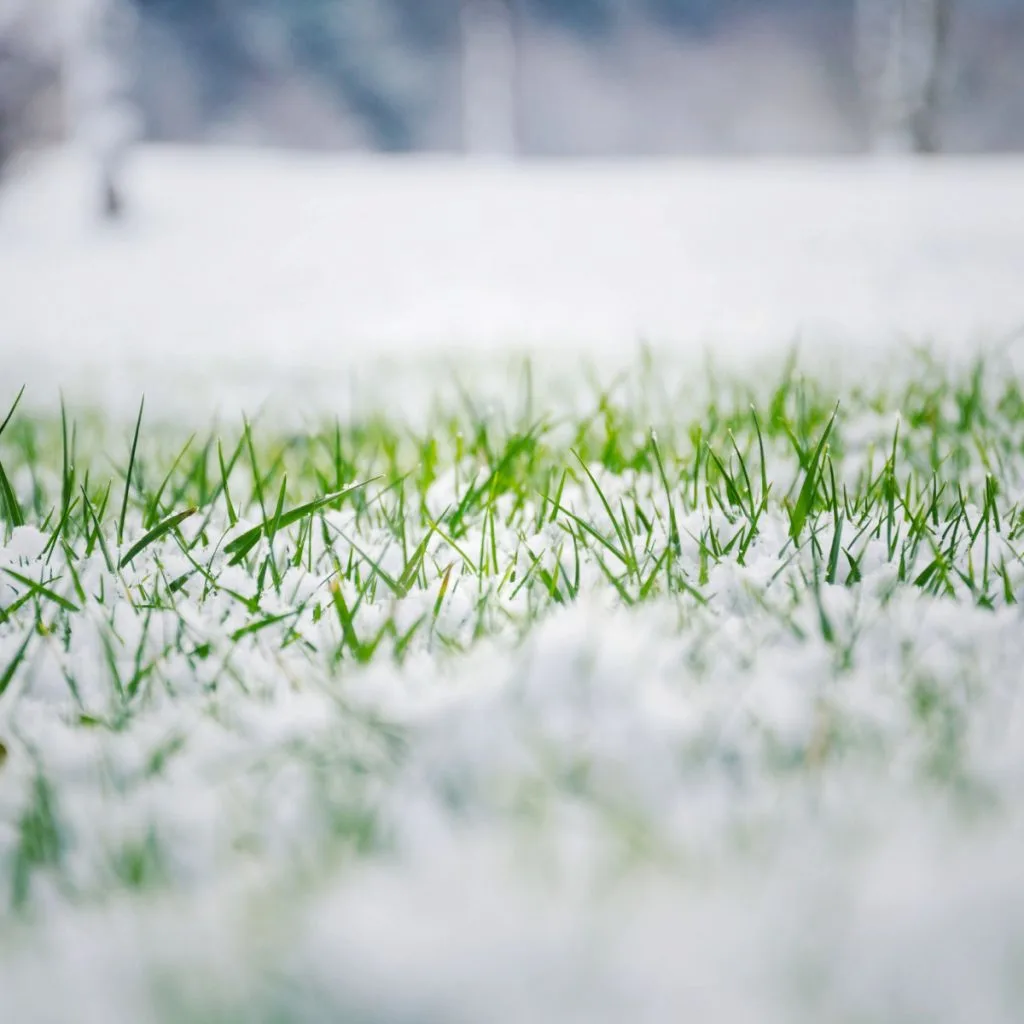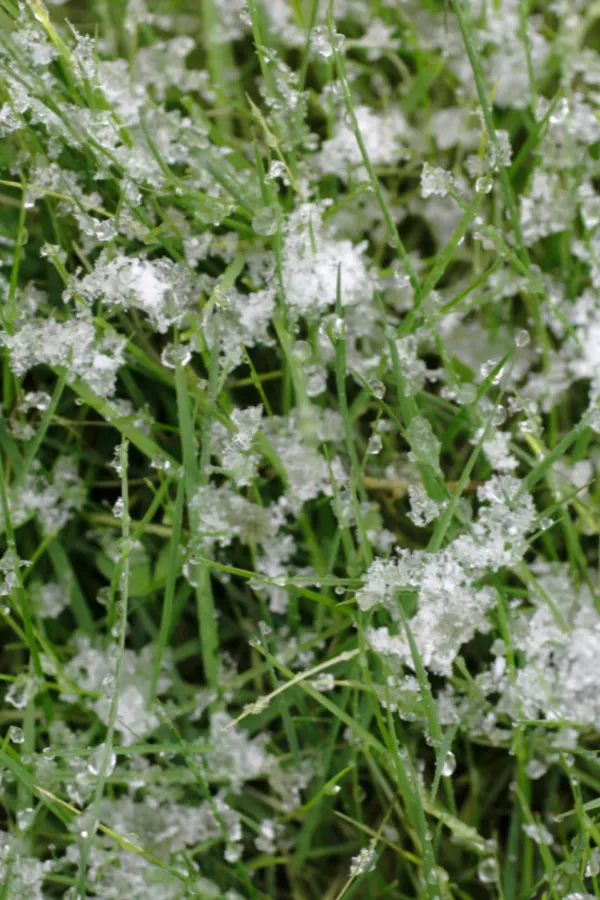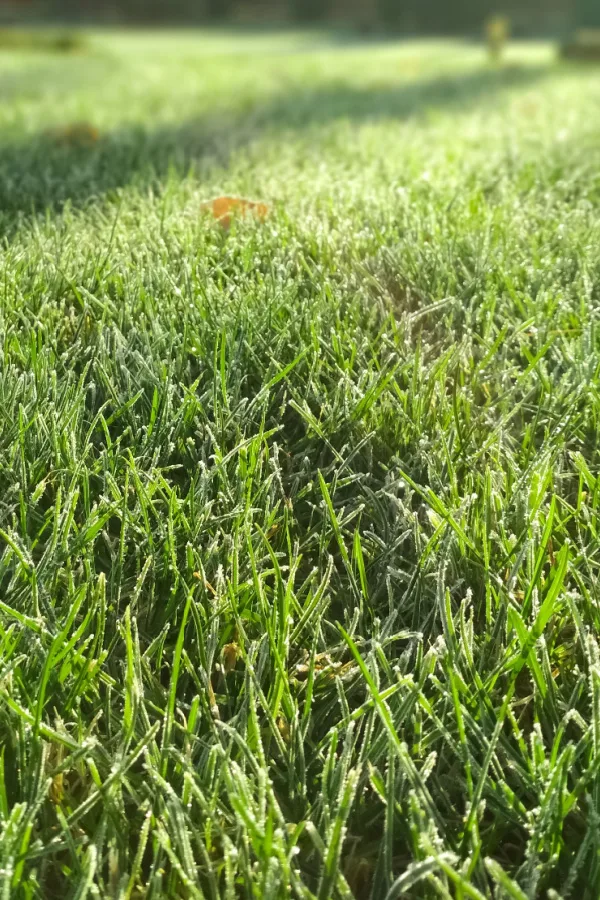Did you know that late winter is actually one of the best times of all to sow and plant grass seed for your lawn?
It’s true! Not only can spreading grass seed in late winter help to thicken and repair lawns to have them ready to go for spring and summer, winter seeding also happens to be one of the easiest times for spreading seed.
In fact, as you will see below, there are a whole slew of advantages to putting down grass seed before spring arrives. And one of the best of all is that you don’t ever have to worry about watering your lawn to make it work!

Let’s face it, getting grass seed to take hold in the spring and summer can be difficult. The long, hot days can make it hard for seed to germinate and grow. Especially without constant watering to keep it from drying out. In addition, a lawn gets a lot more use and abuse from foot traffic during the summer season as well.
Even fall seeding can have its challenges. Although the cooler and often wetter weather certainly makes fall an ideal time for planting seed, lawns can still get quite a bit of foot traffic. And, of course, fall seeding still requires watering as well. But winter seeding gets rid of all of those worries!
How To Plant Grass Seed In Late Winter
What really makes late winter special for spreading seed is that it can be done with ease. It really is as simple as heading out and putting down seed right on top of your existing grass and letting the magic happen. And that magic occurs because the conditions in your lawn are perfect for accepting and protecting the grass seed before it germinates!
The best news of all? You can spread seed in almost all kinds of winter conditions. After a frost or freeze. Before or after a light rain. On a sunny day. Or even right after or before a snow fall. In fact, as you will see below, after a light snow is actually the best time of all to plant seed in the winter!

Why Late Winter Is A Great Time To Plant Grass Seed
So why is winter so ideal for sowing and starting grass seed? For starters, obviously, in late winter, there is little to no traffic on a lawn to disturb the seed. There are no lawn mowers and trimmers running it over weekly. Nor are there kids and adults walking and running on it day in and day out.
Even better, by late winter, most lawns are full of moisture. Whether it is through winter rains, winter snowfall, or from basic frosts and freezes, moisture naturally builds up in the soil. And because of those conditions, that moisture sticks around and doesn’t dry out.
In winter, temperatures in most climates are cooler if not routinely below freezing. Even more, the sun doesn’t shine as long or as with as much intensity as it does in the spring and summer – if it shines at all. So any moisture that is present stays. And when it comes to germinating and growing grass, moisture is critical for success!
But beyond that valuable moisture, the soft soil in the winter is also perfect for allowing seeds to set. All of those rains, frosts, freezes and even snowfalls loosen the top level of soil. Thawing and freezing temperatures also create small channels and cracks in the soil as well.
The soft soil and channels are all perfect for allowing seeds to find a home. Even better, when they do, there is plenty of moisture to help set the seeds. And best of all – cold temperatures do not bother or damage grass seed in the least. So they simply lie in wait for the first warm days to start sprouting right up!

Planting Grass Seed In Late Winter
So how do you plant in late winter? It really is as simple as using a hand-held rotary spreader or lawn spreader, or even casting seed by simply throwing seed over your lawn. There is no need to water it in – just sow and go!
As for when to sow seed, a lot will depend on your specific climate. For most, the best time to plant grass seed will be from mid-February to April. Light snows are excellent for spreading seed, but you will want to avoid heavy snowfalls as seed can run-off more easily with a big melt.
As when planting grass seed at any time of the year, always start with a good quality seed. It’s best to always select a grass seed blend rather than a single type of seed. Blends contain a mix of grass seeds that fill in for a thicker lawn. Blends are also far less likely to be disturbed by pests and disease. Affiliate Link: Pennington Fescue Grass Seed Mix
Seeding Before A Frost Or Freeze
If your area will be having a frost or freeze, you can either spread the seed late in the evening prior to or in the early morning of the frost. Either will put the seed directly in contact with the moisture and allow it to sink down into the surface of the soil.

Of the two times, putting it on the day or evening before is best. This keeps you from tracking up seed with your shoes in the moist frost soil as you spread it.
Seeding After A Light Snowfall
Spreading seed into a light snow is actually the best method of all for late winter seeding. If you have a dusting to a few inches of snow on the ground, use a hand spreader to cast seed over the area. As the snow melts in, it will take the seed with it. Affiliate Link: Scotts Handheld Spreader for Grass Seed
If the snow fall was heavy, allow it to melt down to the one to two inch level before spreading seed. This will keep the seed from being carried away from too much runoff.
You can, of course, seed anytime in late winter, even if you don’t have a frost or freeze. The cool temperatures and wet soil will help the seed set. If you do happen to live in a cooler but non-snowy and frosty area, try to time up your late winter seeding right before or after a rain to help soak it in.
Here is to overseeding your lawn in late winter, and to having a lush lawn this spring and summer! If you are looking for more great lawn care advice – check out our article on How To Kill Crabgrass Without Chemicals – For Good!
Follow Our Facebook Page For Great Gardening Tips And Advice! This Is My Garden Facebook Page
This Is My Garden is a garden website created by gardeners, for gardeners. Jim and Mary Competti have been writing gardening, DIY and recipe articles and books and speaking for over 15 years from their 46 acre Ohio farm. They publish three articles every week, 52 weeks a year. Sign up today to follow via email, or follow along!
Seeding
